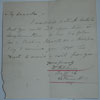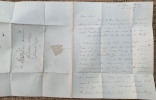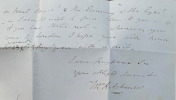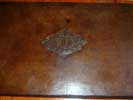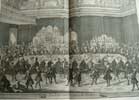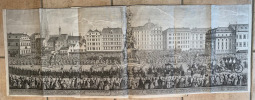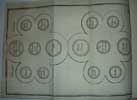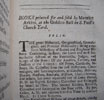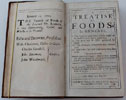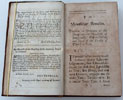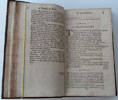APICIUS REDIVIVUS; OR, THE COOK'S ORACLE:
Wherein especially THE ART OF COMPOSING SOUPS, SAUCES, AND FLAVOURING ESSENCES IS MADE SO CLEAR AND EASY, BY THE QUANTITY OF EACH ARTICLE BEING ACCURATELY STATED BY WEIGHT AND MEASURE, THAT EVERY ONE MAY SOON LEARN TO DRESS A DINNER, AS WELL AS THE MOST EXPERIENCED COOK; Being Six Hundred Receipts, THE RESULT OF ACTUAL EXPERIMENTS INSTITUTED IN THE KITCHEN OF A PHYSICIAN, FOR THE PURPOSE OF COMPOSING A CULINARY CODE FOR THE RATIONAL EPICURE, AND AUGMENTING The Alimentary Enjoyments of Private Families; COMBINING ECONOMY WITH ELEGANCE; SAVING EXPENSE TO HOUSEKEEPERS, AND TROUBLE TO SERVANTS. "I have taken as much pains in describing, in the fullest manner, how to make, in the easiest, most agreeable, and the most economical way, those Dishes which con-tribute to the comforts of the middle rank of Society, as I have in directing the preparation of those piquante and elaborate relishes, the most ingenious accom-plished "Officers of the Mouth" have invented for the amusement of Grands Gourmands. These are so composed, as to be as agreeable and useful to the stomach, as they are inviting to the appetite; nourishing without being inflammatory, and savoury without being surfieting" - vide PREFACE. page 3. LONDON; PRINTED FOR SAMUEL BAGSTER, NO.15, PATERNASTER-ROW, By J. Moyes, Grenville Street. 1817.
FIRST EDITION: 154x98mm. Unpaginated -- [a-b]12 [c]2 [B-Q]12 [R]4 - 210 Leaves. Four engraved plates. two with illustrations, two with text, describing quartering the ox, the calf, the sheep and the pig. With 2 feps. A good clean copy with some small ink stains on the Title page. Some manuscript notes on margins of Preface Page. Full dark brown nineteenth century calf with neat cross checked blind tooling with gilt lines at the edges. The spine with early elaborate gilt tooling sometime neatly re-laid. With a dark red label and gilt lettering. There are some ink marks to the title page that do not detract also some manuscript notes on the next page that do not affect the text. A nice copy of the very scarce 1st edition, elevating it to rarity with the topical letter signed by Kitchiner.
- The autograph letter signed 'Wm. Kitchiner', to 'My dear friend' thanking him for his zeal on behalf of Mr Harris. He goes on --- "You will be glad to hear that your old friend 'The Cook's Oracle' has recovered a state of health that he hardly ever hoped for, and in the course of this next week will pay a visit to Longmans about your book" Dated 8th Oct 1826. Measuring 4x3" x 2 folding pages, in good condition, with a newspaper advertisement for Ude's 'The French Cook.'




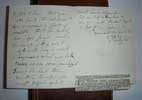
click on image to enlarge

Antiquarian category
ref number:
10970 




